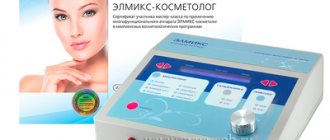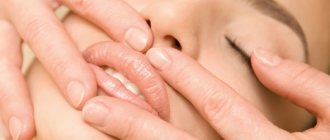The causes of acne development are due to excessive production of sebum by the sebaceous glands and insufficient facial hygiene. Provoking factors are also the individual characteristics of the body, in which there is a thickening of the stratum corneum of the skin, leading to blockage of the mouth of the hair follicle. As a result of the action of these predisposing factors, purulent foci appear on the skin of the face and back, after opening which scars remain. Ozone therapy is one of the methods of combating inflammatory and pustular skin lesions.
Methods of influence
The development of a therapeutic effect is achieved by introducing ozone
- using intradermal, subcutaneous, intravenous injections;
- by drip;
- externally using ozonated oil.
To treat acne, the ozone-oxygen mixture is most often administered intravenously or by injecting problem areas, that is, carrying out a mesotherapeutic effect. The main tool is a special syringe with a thin needle, which contains an ozone-oxygen cocktail. Once in the blood, such a solution destroys infectious agents and also activates the immune system. The situation can also be improved thanks to:
- vasodilation;
- improvement of microcirculation;
- normalization of metabolism;
- restoration of oxygen transport.
Ozone therapy for acne is a very effective method of treatment. Already after the first procedure, there is a decrease in the pain of pathological foci. They become less pronounced and resolve over time. To speed up the process, large lesions are opened before ozone therapy. On average, to obtain the desired effect you will need about 8 procedures, performed every other day.
What is ozone therapy and what is the mechanism of action of ozone?
Ozone therapy is a non-drug physiotherapeutic method based on the use of ozone for therapeutic and prophylactic purposes . The main active component is an unstable megamolecule formed by three oxygen atoms and having one free bond, which ensures its high activity. Ozone has a very high electron affinity (1.9 eV), which determines its properties as a strong oxidizing agent: only fluorine surpasses it in this regard (S. D. Razumovsky, 1990). Ozone oxidizes all metals except gold and platinum, as well as most other elements. Despite its high oxidation potential, ozone reacts extremely selectively. The reason for this selectivity is the polar structure of the ozone molecule, or more precisely, the positively polarized oxygen atom, which gives the entire molecule an electrophilic character. Therefore, molecules with high electron density are the most preferred reactive elements. Compounds with free C=C double bonds react instantly, phenols and free amines are oxidized in seconds, while, for example, alcohols are oxidized within a few hours.
Ozone is a gas that is toxic if inhaled. It irritates the mucous membrane of the eyes and respiratory tract, and damages the surfactant of the lungs. The sequence of painful manifestations when inhaling ozone was described by the German hygienist K. Flugge. First, drowsiness sets in, then breathing changes - it becomes deep, irregular. At the end there are breaks in breathing. Death occurs, apparently, as a result of respiratory paralysis. Pathological studies showed a characteristic picture of ozone poisoning: the blood does not clot, the lungs are riddled with numerous confluent hemorrhages. As a result, the maximum permissible concentration (MAC) of ozone in the air of a working room has been set at 0.1 mg/m2, which is 10 times the olfactory threshold for humans.
At high concentrations (more than 200 µg/l) ozone is toxic, but in the therapeutic range of concentrations (from 8 to 200 µg/l) for external use (on the skin and wound surface), enteral ( per os et per rectum )
and parenteral administration, ozone does not have a toxic effect on the human body.
Among the reasons for the bactericidal effect of ozone, the most often mentioned is a violation of the integrity of bacterial cell membranes, caused by the oxidation of phospholipids and lipoproteins. Gram-positive (G+) bacteria are more sensitive to ozone than gram-negative (G-), which is apparently due to differences in the structure of their shells. There is also evidence of the interaction of ozone with proteins. The ability of ozone to penetrate inside a microbial cell has been discovered, which leads to its reaction with cytoplasmic substances and the transformation of a closed DNA plasmid into open DNA; thereby reducing bacterial proliferation.
The virucidal effect of ozone is associated with damage to the polypeptide chains of the envelope, which can lead to disruption of the ability of viruses to attach to target cells and the splitting of one strand of RNA into two parts, undermining the foundation of the reproduction reaction. Encapsulated viruses are more sensitive to ozone than non-encapsulated viruses. This is explained by the fact that the capsule contains many lipids that easily interact with ozone.
The targets of ozone exposure in the body are:
- unsaturated fatty acids;
- free amino acids;
- amino acids in peptide bonds;
- nicotinamide coenzyme.
Since during ozone therapy reactive oxygen species enter the body, the question of the effect of ozone on the process of free lipid peroxidation (LPPO) is very important. Numerous studies have shown that therapeutic doses of ozone stimulate the antioxidant system and reduce the intensity of lipid peroxidation. In the process of ozone therapy, the initial activation of free radical oxidation under the influence of ozone therapy naturally occurs, since ozone (the molecule of which is unstable) and oxygen are introduced into the body, but at the same time the antioxidant defense system is quickly launched, which ozone apparently indirectly stimulates.
Thus, medical ozone has the following biological effects:
- bactericidal effect;
- virucidal effect;
- fungicidal effect;
- restoration of microcirculation and peripheral circulation;
- reduction of tissue hypoxia;
- restoration of oxygen transport function of the blood;
- stimulation of antioxidant protection;
- decreased blood clotting;
- detoxification effect;
- anti-inflammatory effect;
- acceleration of metabolism;
- immunomodulatory effect (small doses of ozone stimulate the immune system, large doses suppress it);
- analgesic effect.
Methods of using ozone for medical purposes
Ozone affects the body in two ways: locally or systemically. The choice of method entirely depends on the degree and duration of the disease, on how active the inflammatory processes are in the human body, whether there are pathologies or any contraindications. Ozone concentration is very important for treatment effectiveness. Thus, with the external use of high concentrations (from 80 -200 μg/l) of gaseous ozone and ozonized solutions when treating infected wounds, bedsores, gangrene, etc. its powerful oxidative properties directed against microorganisms are manifested. Ozone kills all types of bacteria, viruses, fungi and protozoa. Moreover, unlike many antiseptics, ozone does not have a destructive or irritating effect on tissue, since the cells of a multicellular organism have an antioxidant defense system. Medium concentrations (40-80 µg/l) - to reduce pain and inflammation, and in small concentrations (8-40 µg/l) ozone promotes rapid healing of uninfected wounds.
In cosmetology, both local and systemic methods of application are used:
Topical ozone application methods include:
- irrigation with ozonated water;
- application of ozonated oils, masks and massage with ozonated oil.
Systemic methods of ozone therapy include the following parenteral methods:
- large autohemotherapy with ozone;
- minor autohemotherapy with ozone;
- subcutaneous ozone injections;
The effect of parenteral administration of medium and low concentrations of ozone in pathologies accompanied by hypoxic disorders is based on the activation of oxygen-dependent processes, which contributes to the inclusion of compensatory mechanisms aimed at eliminating disturbances of homeostasis.
Contraindications, possible complications and side effects
According to MT Jacobs (1986), in relation to the total number of ozone therapy procedures, the level of complications is 0.006%. The number of reliable complications among patients treated with ozone is 7 cases per 1 million - this is a negligible value compared to other types of treatment. Most often, side effects of ozone therapy occur during intravenous procedures, especially with intravenous administration of an ozone-oxygen mixture, which has now been practically abandoned. The causes of side effects are incorrect administration technique and incorrectly chosen dosage. Ozone therapy procedures can be carried out by either a doctor or a nurse, but the first procedure must be carried out in the presence of a doctor. At the slightest deterioration of the patient's condition, the procedure should be stopped.
Contraindications:
- all bleeding disorders, including thrombocytopenia, hemophilia;
- hyperthyroidism;
- tendency to seizures;
- allergic reaction to ozone;
- acute alcohol intoxication;
- menstruation period;
- deficiency of the enzyme glucose-6-phosphate dehydrogenase - G-6-FDG;
- the use of drugs that reduce blood clotting.
Possible complications and side effects
From experience, we can say that there are usually no significant side effects; there may be small hematomas at the injection site, which disappear, like a regular bruise, within a week. Their appearance is associated with individual morphological features of the structure of the intradermal vascular network. Possible: redness and soreness at the injection site (disappear within half an hour after the end of the procedure), slight dizziness, which also disappears within half an hour, as well as a transient decrease in blood pressure, pressing pain in the chest, dyspnea.
But you should always remember about a possible allergic reaction, therefore, at the slightest suspicion of it, you should stop the procedure and look for alternative treatment methods in the future.
Contraindications
The following factors are contraindications to the procedure:
- cardiovascular pathology in the stage of decompensation;
- disorders of the blood coagulation system;
- endocrine pathology;
- epilepsy.
The time limit for the procedure is menstruation.
The advantages of the procedure are high efficiency, noticeable effect after the first procedures. In addition, ozone therapy is the method of choice when it is impossible to carry out photodynamic therapy or mesotherapy due to the development of allergic reactions.
Result of the procedure: before and after photos
General requirements for medical ozonation units
The above information about the properties of ozone indicates the need for careful handling. Ozone should not leak in areas where people work. Its content in the air should not exceed the maximum permissible concentration - 0.1 mg/m3.
A medical ozonator installation must include an air-cooled ozonizer and a system that opens, regulates the speed and shuts off the gas flow. Measuring the flow rate is desirable, although not a mandatory requirement, but in any case, a flow indicator is required, which informs the doctor about the normal operation of the gas tract. The concentration of ozone in the gas mixture at the outlet of the ozonator should vary in a wide range from several units to a maximum - not lower than 70-80 mg/l. Moreover, the ozone concentration should be smoothly regulated and measured throughout this range. Only in this case can the installation ensure the use of all known methods of ozone therapy.
In Russia, the production of high-quality ozonation units is now being actively developed, which significantly facilitates the implementation of the technique, since due to low-quality devices, ozone has not been used for medical purposes.
Rehabilitation after acne** treatment with ozone
The result of the procedure depends not only on the professionalism of the doctor or cosmetologist, but also on the patient. Typically, recovery after ozone therapy takes about 2 days, but during this period it is important to follow medical recommendations216:
- the treated areas should not be touched with hands;
- in the first days you need to completely stop using cosmetics;
- Until the skin is completely restored, avoid visiting the solarium, swimming pool, or sauna.
After ozone therapy for acne, it is also necessary to avoid prolonged exposure to the sun until the end of the rehabilitation period.216
Visible result
By the end of the course of procedures, patients note that:
- the double chin disappeared, the cheeks became less plump;
- wrinkles and folds smoothed out, pores narrowed;
- no bags or circles under the eyes;
- the complexion improved, it became fresher and healthier-looking;
- dryness, oiliness, swelling and sensitivity of the skin have decreased;
- inflammation has receded: acne, pimples, comedones, acne;
- age spots and spider veins disappeared;
- the skin became smooth, elastic and toned, no longer sagging;
- the oval of the face has become clearer and more expressive;
- the sides, tummy and “breeches” on the hips disappeared;
- the waist has become thinner and stands out even from the back;
- the breasts, hips and butt became elastic and beautiful in shape;
- there are no signs of cellulite, the “orange peel” has decreased or completely disappeared.
In addition to the visible results, women note that after a course of ozone therapy, their mood improved, their immunity and performance increased.
Indications for facial ozone therapy
In modern cosmetology, different concentrations of ozone, as well as methods of its administration, are used to solve various problems. Highly concentrated ozone preparations have a powerful disinfectant effect. Medium doses of ozone help reduce inflammation and relieve pain. Low dosages have a wound-healing and rejuvenating effect.
Ozone is a powerful oxidizing agent that effectively destroys viral, bacterial, and fungal infections. Healthy tissues, on the contrary, receive a powerful energy impulse, are saturated with oxygen, due to which they accelerate:
- enzymatic reactions;
- metabolism;
- tissue respiration;
- removal of toxins and metabolic products.
- Indications for ozone therapy for the face are as follows:
- expression and age wrinkles of varying depths;
- acne, acne, blackheads;
- scars, cicatrices, post-acne;
- severe rosacea, telangiectasia;
- dark circles, bags under the eyes;
- enlarged pores;
- rosacea;
- dermatitis of various etiologies;
- oily, dry, flaking skin;
- flabbiness, emaciation of the skin;
- dull color, decreased tone;
- double chin, swollen oval face;
- hyperpigmentation and congestive spots.
Oozone therapy of the face is used to prepare for contouring with fillers, botulinum toxin, as well as to correct deficiencies caused by their administration.
Price of facial ozone therapy
| Processing area | Price |
| Face | 3200 rub. |
| Oval | 1500 rub. |
| Chin | 1200 rub. |
| Neck | 1300 rub. |
| Face + chin | 3900 rub. |
| Face+neck+décolleté | 6000 rub. |
| Shoulders | 3900 rub. |
| Stomach | 3200 rub. |
| Sides | 1950 rub. |
| Full back | 5200 rub. |
| top part | 3200 rub. |
| Bottom part | 3000 rub. |
| Buttocks | 2300 rub. |
| Hips (separately anterior or posterior surface) | 3900 rub. |
| fully | 6500 rub. |
| For scars up to 5 ml. | 600 rub. |
| up to 10 ml | 1000 rub. |
| up to 15 ml. | 1300 rub. |
| up to 20 ml | 2000 rub. |
pros
Ozone therapy for the face and body has a number of benefits, including:
- Efficiency. The first results are observed after 1–3 procedures. The effect reaches its maximum towards the end of the course.
- Persistence. Depending on age, severity of the problem and skin condition, the effect lasts from 6 months to a year.
- Painless. Thanks to the treatment with analgesics, ozone therapy does not cause discomfort.
- Safety. Ozone is well tolerated by the body and causes virtually no adverse reactions. No recovery period is required.
- Versatility. The method has no age or gender restrictions and is suitable for most people. However, ozone therapy is most in demand among young and middle-aged women.
- Compatibility with contour plastic surgery, hardware and manual procedures: myostimulation, lymphatic drainage, electrolipolysis, various types of massage. These techniques make the results of injections more lasting and noticeable.
- Availability. The method is much cheaper than plastic surgery and contouring.
Therapeutic properties of the procedure
One of the main properties of oxygen is the ability to react with many elements of the periodic table. It cannot be adjacent to other substances in a cream or mask - the molecules will oxidize before they reach the skin. Therefore, the terms “ozone cosmetics” and “oxygen cosmetics” are just a marketing ploy.
But scientists managed to “tame” ozone and make it work for the benefit of beauty. The effect of this gas on the body for the purpose of healing and rejuvenation is called ozone therapy. Its effect is based on a number of beneficial properties of gas:
- Acceleration of cellular metabolism due to the synthesis of ATP and its subsequent breakdown.
- Destroying pathogenic bacteria.
- Improving blood supply by dilating blood vessels.
- Increasing immunity.
- Relieving pain from injuries or inflammation.
Anti-aging properties are explained by stimulating fibroblast function. These are skin cells that produce structural proteins - collagen and elastin. The elasticity of the skin depends on them. In adulthood, when cellular turnover slows down, fibroblasts produce fewer structural proteins. The skin loses its elasticity. This process cannot be stopped, but it can be significantly slowed down with stimulation.
The skin framework consists of elastin and collagen
More ATP means more energy for cells – more collagen and elastin. This is how we can briefly describe the rejuvenating effect of the procedure.
Minuses
Among the disadvantages of ozone therapy for the face and body are:
- Adverse reactions. Blisters, spots, bruises and lumps may appear at the injection site, which will resolve in 1–4 days. Some patients have allergic reactions to ozone. Most often, they manifest themselves as edema, swelling, and rash. In extremely rare cases, frequent urination or renal colic may occur.
- Risks. If the drug is not administered properly, paralysis of the facial muscles may occur. In this case, the face becomes immobilized and loses sensitivity. The condition requires immediate medical intervention.
- Presence of contraindications. It is most dangerous to do ozone therapy if there is a hereditary predisposition to cancer: the gas accelerates cell division and can provoke tumor growth. You should not take risks with thrombophlebitis: ozone will increase blood circulation and lead to blockage of blood vessels, heart attack, and stroke.
- Difficulties. The course of ozone therapy is long and takes 3–4 weeks. In addition, in most cases, injections have to be repeated after 2-3 months. And in case of severe skin problems, cellulite and excess weight, it is recommended to supplement the therapy with other methods.
Be careful when choosing a beauty center. Be sure to view photos and videos after the procedures, read reviews.
Before signing documents, study them. Under no circumstances agree with the “no consequences” clause. If complications arise, you will not be able to prove anything.











